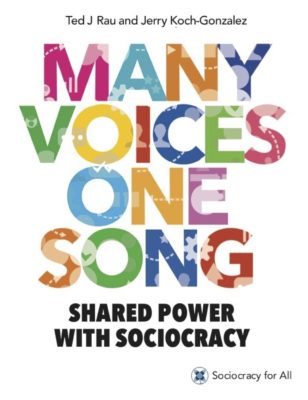 These example rules were written in 2015 by Sharon Villiers and John Buck. This website is having minimal maintenance done by SoFA, so, rather than updating these rules, we suggest interested readers go to www.sociocracyforall.org/bylaws.
These example rules were written in 2015 by Sharon Villiers and John Buck. This website is having minimal maintenance done by SoFA, so, rather than updating these rules, we suggest interested readers go to www.sociocracyforall.org/bylaws.
Examples of Sociocratic Bylaws
Both two examples of sociocratic bylaws posted on Sociocracy.info are based on legally filed documents. They that sociocratic principles and practices can be specified and legally approved. The Bylaws for a Sociocratic Business are based on those of a LLC registered in Delaware. The Bylaws for a Sociocratic Organization is based on the bylaws of an advocacy organization incorporated in Washington DC.
Bylaws for sociocratic organizationsThe Delibrative Democracy Consortium (DDC)u is an alliance o... and associations differ from those of sociocratic businesses only in tone and the specific provisions for each business or organizational model. Public corporations will have investors, for example, and non-profit associations will have members. Each will require specifying the rights of their stakeholders.
These examples may be adapted for associations, clubs, corporations, intentional communities, condominiums, cooperatives, small businesses, etc. Some clauses may not apply and others will need to be amplified or added to meet the legal requirements of your county, province, or state.
The sections that specify sociocracy as the governance structure and consent as the method of decision-making, however, are usually the same. Titles may change to follow the customary practice in a particular field, but this is not a substantial difference.
Powers of the Board of Directors
People are most often concerned about the requirements for a Board of Directors that has certain powers. Typically a Board has life and death power over an organization while a sociocratic Top Circle does not. A Top Circle has unique responsibilities, as does a Board, but does not have the power to dissolve or sell the business or organization.
Most requirements for Boards can be accommodated by stating that the Board of Directors is identical to the Top Circle and by understanding that the Board may be responsible by law for certain decisions but that doesn’t mean it has to have the sole power to make them. These decisions can be delegated. The role of the Board becomes to ratify the decisions ensuring that they were made using proper process and assuming shared responsibility for the outcome.
Majority Vote
The second concern is the typical requirement of majority vote for most if not all decisions of the Board. The minimum for majority vote is usually 51% of those present and voting, or 50% plus one when 50% produces a fraction. The requirement of consent is 100% of those present and consenting. Since the 51% majority is included in the 100% consenting, this requirement is satisfied.
Part of the reason majority vote is required is to ensure that a minimum number of members have approved a decision. Some organizations require a “super majority” of 80% or even 98%. Another reason for requiring majority vote is to ensure that decisions get made. The majority can decide to move forward when there is dissension that endangers the organization.
The same conflict might occur in sociocratic organizations, but they use a different solution. When consent cannot be reached, the decision goes to an expert, one who is a member of the Board if appropriate, or to another expert capable of making an informed decision.
Legal Advice
These examples are for reference only. Laws differ significantly between jurisdictions. Professional legal advice is required to ensure that the laws protecting your organization have been addressed and that your bylaws have been properly and unambiguously worded. A missing comma can dramatically and disastrously change the meaning.
In addition to helping you understand what is included in bylaws, these examples will help you draft your own bylaws for your lawyer and then modify them as advised. This allows your organization to make many of its decisions before becoming overwhelmed with external expectations and legalese.
Plain English
For decades, Plain English has been taught as the standard in the legal field. But because they are still in the computer, many law firms are still using boiler plate legal phrases from the mid 20th century. Insist that your documents be written in Plain English.
Plain English for Lawyers by Richard C. Wydick has been the accepted reference for over 25 years and maybe helpful.
Writing bylaws may seem like a tedious chore but it is a document that defines your organization and gives everyone a common understanding of how the organization will function.
Self-definition that is hard and that is the core of bylaws.
Learn more about legalizing sociocracy with more sample bylaws at Sociocracy for All.
Categories: Getting it done, In the Workplace

